The Maine Coon is the largest domesticated breed of cat.
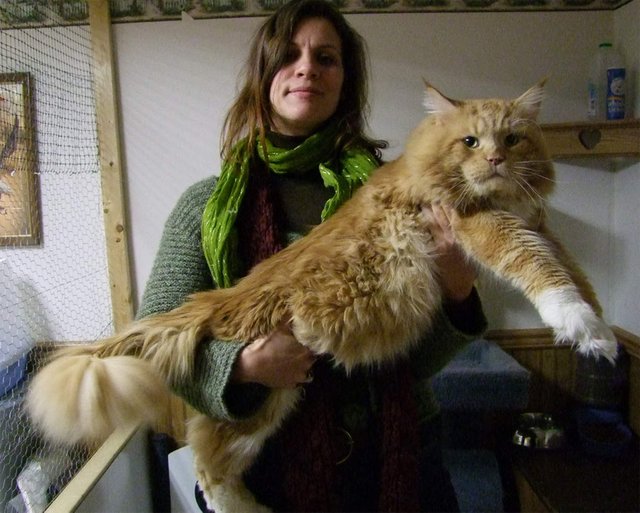
It has a distinctive physical appearance and valuable hunting skills.
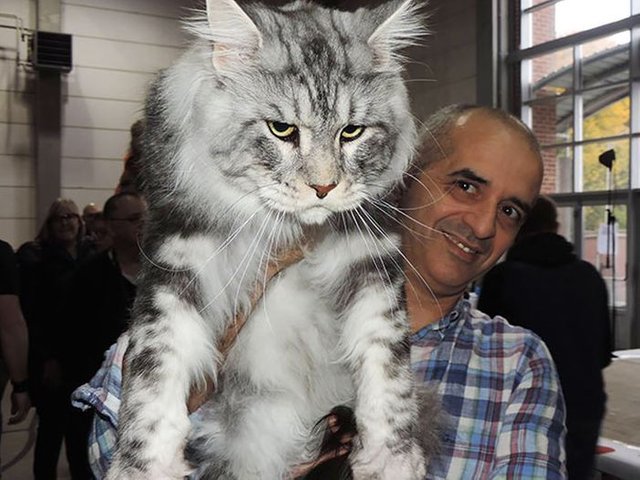
It is one of the oldest natural breeds in North America, specifically "native" to the state of Maine (though the feline was simply introduced there), where it is the official state cat.

No records of the Maine Coon's exact origins and date of introduction to the United States exist, so several competing hypotheses have been suggested. The breed was popular in cat shows in the late 19th century, but its existence became threatened when long-haired breeds from overseas were introduced in the early 20th century. The Maine Coon has since made a comeback and is now one of the more popular cat breeds in the world.
History
The ancestral origins of the Maine Coon are unknown — there is only speculation and folk tales. One such folk tale involves Marie Antoinette, the Queen of France, who was executed in 1793. The story goes that before her death, Antoinette attempted to escape France with the help of Captain Samuel Clough. She loaded Clough's ship with her most prized possessions, including six of her favorite Turkish Angora cats. Although she did not make it to the United States, her pets safely reached the shores of Wiscasset, Maine, where they bred with other short-haired breeds and developed into the modern breed of the Maine Coon.
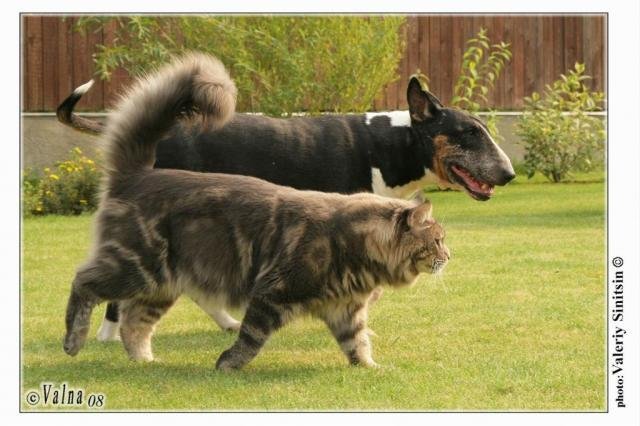
Another folk tale involves Captain Charles Coon, an English seafarer who kept long-haired cats aboard his ships. Whenever Coon's ship would anchor in New England ports, the felines would exit the ship and mate with the local feral cat population. When long-haired kittens began appearing in the litters of the local cat population, they were referred to as one of "Coon's cats".
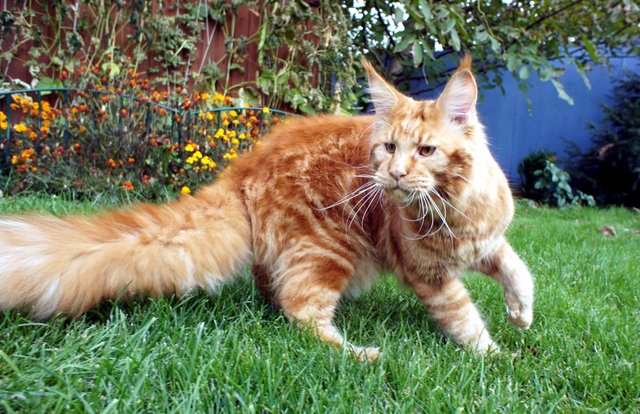
A myth which is trait-based, though genetically impossible, is the idea that the modern Maine Coon descended from ancestors of semi-feral domestic cats and raccoons. This myth is likely based on the common color of the breed (brown tabby) and its bushy tail. Another idea is that the Maine Coon originated between the matings of domestic cats and wild bobcats, which could explain the tufts of hairs that are so commonly seen on the tips of the ears.
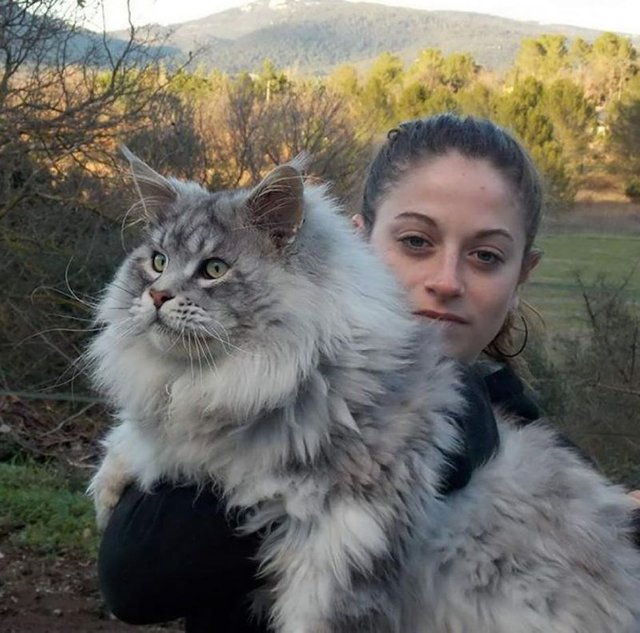
The generally accepted hypothesis among breeders is that the Maine Coon is descended from the pairings of local short-haired domestic cats and long-haired breeds brought overseas by English seafarers (possibly by Captain Charles Coon) or 11th-century Norsemen. The connection to the Norsemen is seen in the strong resemblance of the Maine Coon to the Norwegian Forest Cat, another breed that is said to be a descendant of cats that traveled with the Norsemen.
Breed description
Maine Coons are the largest breed of domestic cat. On average, males weigh from 13 to 18 lb (5.9 to 8.2 kg) with females weighing from 8 to 12 lb (3.6 to 5.4 kg). The height of adults can vary between 10 and 16 in (25 and 41 cm) and they can reach a length of up to 48 in (120 cm), including the tail, which can reach a length of 14 in (36 cm) and is long, tapering, and heavily furred, almost resembling a raccoon's tail. The body is solid and muscular, which is necessary for supporting their own weight, and the chest is broad. Maine Coons possess a rectangular body shape and are slow to physically mature; their full potential size is normally not reached until they are three to five years old, while other cats take about one year.
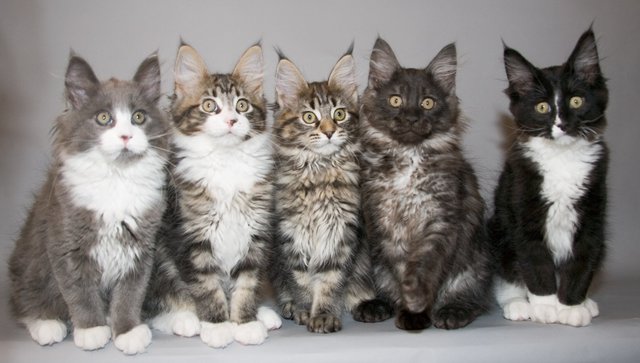
In 2010, the Guinness World Records accepted a male purebred Maine Coon named "Stewie" as the "Longest Cat" measuring 48.5 in (123 cm) from the tip of his nose to the tip of his tail. Stewie died 4 February 2013, from cancer at his home in Reno, Nevada, at age 8. Large Maine coons can overlap in length with Eurasian lynxes, although with a much lighter build and lower height.
Health
Pet insurance data obtained from a study during years 2003–2006 in Sweden puts the median lifespan of the Maine Coon at >12.5 years. 74% lived to 12 years or more and 54% lived to 16.5 years or more. Maine Coons are generally a healthy and hardy breed and have adapted to survive the New England climate. The most severe threat is feline hypertrophic cardiomyopathy (HCM), the most common heart disease seen in cats, whether pure bred or not. In Maine Coons, it is thought to be inherited as an autosomal dominant trait.
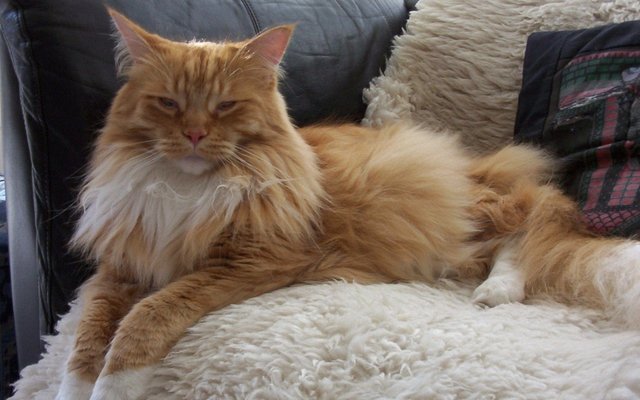
Middle-aged to older cats as well as males are thought to be predisposed to the disease. HCM is a progressive disease and can result in heart failure, paralysis of the hind legs due to clot embolization originating in the heart, and sudden death. A specific mutation that causes HCM is seen in Maine Coons for which testing services are offered. Of all the Maine Coons tested for the MyBPC mutation at the Veterinary Cardiac Genetics Lab at the College of Veterinary Medicine located at Washington State University, approximately one-third tested positive. Not all cats that tested positive will have clinical signs of the disease and some Maine Coon cats with clinical evidence of hypertrophic cardiomyopathy test negative for this mutation, strongly suggesting that a second mutation exists in the breed. The HCM prevalence was found to be 10.1% (95% CI 5.8 -14.3 % ) in this study
Some cat's
Name: Norra
Date of Birth: 01.03.2016

Name: Verona
Date of Birth: 01.03.2016

Name: Leo
Date of Birth: 01.03.2016

Name: Apelsin
Date of Birth: 01.03.2016

Name: Las Vegas
Date of Birth: 01.03.2016

Wow, no idea there were so large cats...
Downvoting a post can decrease pending rewards and make it less visible. Common reasons:
Submit
These cats are very very large)
Downvoting a post can decrease pending rewards and make it less visible. Common reasons:
Submit
First photo was like "wow that's big"
Second photo was like "wow that's ...wtf... that's the size of a small tiger/lion" ahahahah
Downvoting a post can decrease pending rewards and make it less visible. Common reasons:
Submit
lol, but it's young cat)))
Downvoting a post can decrease pending rewards and make it less visible. Common reasons:
Submit
I wanna buy red cat (Las Vegas) - how it possible ?
Downvoting a post can decrease pending rewards and make it less visible. Common reasons:
Submit
I do not sell kittens. And on the site from which i took the information - Las Vegas is reserved for Switzerland
Downvoting a post can decrease pending rewards and make it less visible. Common reasons:
Submit
it's a pity(
Downvoting a post can decrease pending rewards and make it less visible. Common reasons:
Submit
Sorry!(
Downvoting a post can decrease pending rewards and make it less visible. Common reasons:
Submit
and this is my pretty boy...
Downvoting a post can decrease pending rewards and make it less visible. Common reasons:
Submit
nice cat)
Downvoting a post can decrease pending rewards and make it less visible. Common reasons:
Submit
I upvote U
Downvoting a post can decrease pending rewards and make it less visible. Common reasons:
Submit